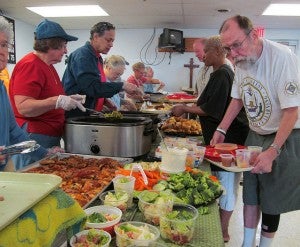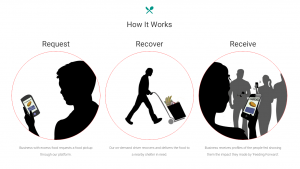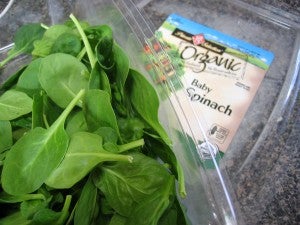
Surplus food at the Food Donation Connection. Photo Credit: USDA.
Food waste affects more than just our wallets. Approximately one-third of all food produced in the world gets thrown away every year, leading to 3.3 billion tons of greenhouse gas emissions. At 2.6 trillion pounds, that’s enough sustenance to feed three billion people, or almost all people living in poverty worldwide today.
That’s why, last week, when I attended a Q&A session for ag interns at the U.S. Department of Agriculture with Secretary Tom Vilsack, I was intrigued when a fellow intern asked a question regarding food sustainability and what the U.S. can do to ensure that there will be enough food to feed the 9 billion people expected to populate the world by 2050.
The Secretary’s answer? Reduce food waste.
Recognizing the value of food
Secretary Vilsack proposed the idea of a young leader investing the time to create a mobile app that would virtually eliminate food waste by connecting those with excess food to places in need of food, such as food banks, homeless shelters and other underserved communities.

Groups like Feeding Forward and Waste No Food are instantly connecting businesses that have excess edible food with communities in need.
Understanding all of the daily hardships farmers have to overcome to put food on our forks, and the hardships that so many face when trying to access food, the Secretary’s idea resonated with me. In high school, I voluntarily led a local chapter for the non-profit organization Teens Opposing Poverty, which worked to end poverty in D.C. through meal preparation and food donations. It made me realize the value and comfort of a warm, freshly made meal.
I can’t promise that I will be the young leader to create the app that Secretary Vilsack proposed, but I am interested in promoting innovations like this that keep food on our plates and readily available to those underserved.
Tackling food waste at every level of the supply chain
If we are going to have enough food to feed 9 billion people in just a few short decades, we can’t wait and hope for any single app to solve all of our food waste and food access problems. We all have to play our part.
There are some valuable steps recommended by the Food and Agriculture Organization of the United Nations that can be taken to curve food waste at every level of the supply chain:
- Producers can package their harvest for better storage and implement new technologies that minimize post-harvest loss.
- Food companies can improve packaging to increase the shelf-life of products, with innovations like sophisticated films that allow fresh produce to breathe, and computerized inventory tracking.
- Grocery stores can sell misshaped food for a lower price to encourage shoppers to purchase all shapes and sizes of produce. They can also promote better consumer understanding that different-shaped doesn’t mean substandard.
- Consumers can plan meals for the week before buying food so they don’t overbuy. They can also take steps to improve food storage, whether by improved lighting, packaging or temperature, to extend product freshness.
Steps like these are just a start, but they have great potential to pave the way for more innovations. By making some changes at all levels of the supply chain, we can begin to solve the food waste problem.
We owe this not only to the producers who devote their lives to feeding the world, but also to the billions of people who are living every day with limited access to food.
Related Links:
From field to table, how companies and farmers are working together to feed the world sustainably >>
We can have food security and a healthy environment >>
Buy me some peanuts and … sustainable produce? >>











One Comment
I can only imagine the amount of food that is thrown away via “best used by” “best before” dates that are inscribed on nearly every food product we buy. These laws and regulations on manufactures need to lighten up. We consumers don’t need the food police instructing us. I opened a box of crackers that has a best before date (Sept 6 2014) this past weekend. They were as crisp as if they had been just bought. I know there are those who would have thrown the box away, never opened.